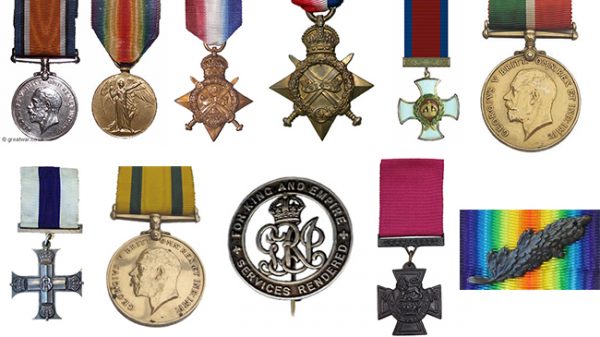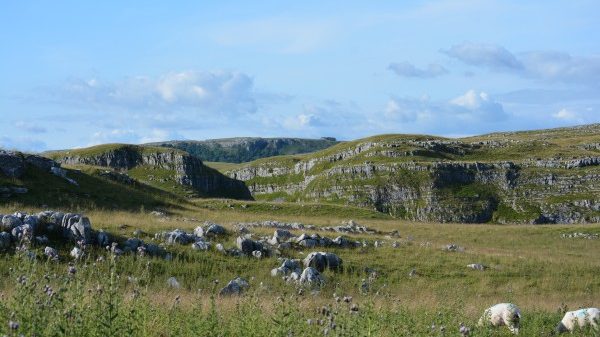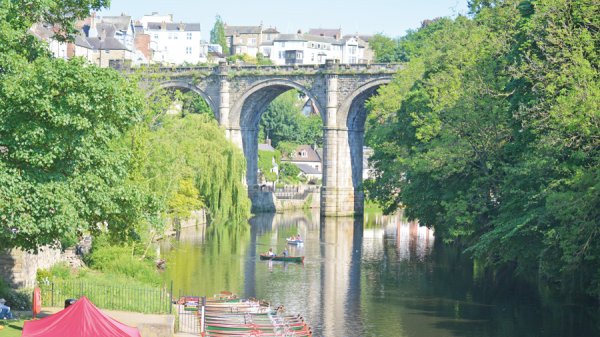This month marks the 200th anniversary of the Leeds & Liverpool canal. Alongside the River Aire, the man made waterway is now taken for granted by many people as a fixture of our city’s landscape and is used for leisure activities such as canal boating, canoeing and angling with many walkers and cyclists enjoying the towpaths. However, the canal is an important part of our heritage and history, forming the basis for much of the industry that made Leeds flourish in the 18th and 19th centuries. Here, we take a look at the history of the longest canal in Britain – why and how it was created, the role it has played throughout the years and also the events organised by the Canal and River Trust to celebrate this anniversary in 2016.
The canal is born
The start of the industrial revolution marked a time in British history when transport became increasingly important. Coal was needed in vast quantities to fuel the new factories springing up and the produce of these factories needed to be delivered quickly in order to meet demand. Horse and cart was a slow method of transport and merchants were looking for faster, easier ways to transport their goods around the country.
The merchants in Leeds were the first to build an inland waterway other than the crown or aristocracy. They created the Aire and Calder Navigation in 1700 and this was a turning point in our history as the first time local people had brought about economic change themselves. Liverpool followed shortly afterwards bringing the Mersey and Irwell, Weaver and Douglas Navigations into use by 1741.
With the success of these inland waterways, Bradford woollen merchants had the idea for a canal to run all the way to Liverpool so that they could easily transport their goods to the growing port and also to receive a better supply of limestone from Craven. The problem with this ingenious idea was cost. The woollen merchants were unable to finance such a large enterprise themselves so they approached merchants in other areas to support the proposal. As probably the largest industrial centre in the north west at the time, Liverpool was more concerned with being able to receive a large supply of coal. With partners on board across the Yorkshire and Lancashire cities, several suggestions were then made about the route the canal should take. Eventually the Yorkshire men’s route won after much debate and construction began simultaneously at each end in 1770.
Although this was an incredibly exciting enterprise for Britain, by this time canal technology was not brand new. Locks had been successfully created in Italy during the 15th century and the first proper canals with an independent water supply had been built in France during the 17th century.
By 1777 two stretches of the canal were open – Leeds to Gargrave and Liverpool to Parbold. At this point the money dried up and no more work was done on the canal until 1790. During this time of inactivity, industry in east Lancashire had flourished so the route was altered to pass through Burnley and Blackburn. This change in route meant that the canal needed to join with the Lancaster Canal at Johnsons Hillock and going down to Wigan using a flight of 23 locks. This solution also saved vital funds. Once these locks were completed in 1816 the Leeds & Liverpool Canal ran continuously between Yorkshire and Lancashire. Various branches were added over the coming years until finally, 76 years since the start of construction, the Irish Sea was linked with the North Sea.
Who built the canal and how?
Before canals, stretches of the inland rivers were often used to transport materials. The parts of river that were navigable were known as navigations and engineering work was often undertaken to make them even more accessible. This name lent itself to the men who started building the canals – they were known as navigators which eventually shortened to navvies.
The work of the navvies was back breaking and often dangerous.
In the History of the Ship Canal Vol 2 by Sir Bosdin Leech is a poem which demonstrates this;
Our work is hard and dangers are always near
And lucky are we if safely through life we steer;
But still the life of a navvy with its many changes of scene,
With a dear old wife, is just the life,
That suits old Nobby Green.
Many men got into the work of a navvy from their previous role of a farm labourer. When the canal drew near them, already used to heavy manual labour, the men would seek work on the new waterway. Even though accustomed to a long day’s work on the farm, the work of a navvy was even tougher as nothing could prepare them for the sheer amount of earth and rock that needed to be shifted on a daily basis. The navvy was expected to cut through tonnes of earth using only picks, shovels and wheelbarrows, and the use of dynamite to blast solid rock was a dangerous task which often resulted in loss of limb or life. Once the channels were dug out they would be lined with ‘puddle’ which is a wet clay, in order to make them watertight. The navvies would compact this down hard by driving sheep and cattle down the canal.
Skilled and experienced navvies were in high demand but their nomadic existence often led to them having a somewhat unpleasant reputation. Whilst working they would be placed in temporary accommodation near their work site and clash with the local community after an evening’s heavy drinking!
One navvy that we know about who worked on the Leeds Liverpool Canal was Alexander MacKenzie. From Scotland, he lodged at the Chapel Inn in Little Marsden and married one of the landlord’s daughters Mary Roberts on the 11th March 1793. Their first son William was baptised at the local chapel and they returned to have the rest of their children baptised there also. These baptismal records track the progress of the canal with the family’s places of residence each time! With the baptism of Margaret in April 1802 for example, it suggests that the canal building had reached Henfield, and by the time that their last child Thomas was baptised at Christmas 1808 they were in Altham. The MacKenzie family finally settled in Blackburn by which time second eldest son Alexander had become a contractor. His son took over the business upon his death in 1836 and eventually became Senior Partner of MacKenzie and Brassey – England’s most successful railway contractors!
Many navvies went on to the railways following their canal work which was equally as back-breaking and probably even more dangerous.
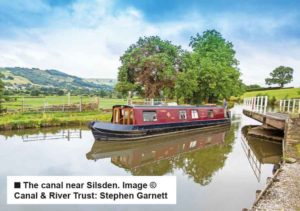
Careers on the Canal
Of course, once the canal was built, it needed men to maintain it. There were various roles involved in keeping the canal operational including section engineers, bankrangers, lock keepers and even canal constables who were employed from 1841 to reduce theft and pilferage.
The Leeds & Liverpool Canal had two section engineers, one for the Lancashire side and one for the Yorkshire side. They were responsible overall for keeping the canal in good order by ensuring locks were maintained and replaced when necessary, bridges and buildings were in good order and the water level was maintained. Mr Bateman was section engineer based in Skipton and was interviewed by the BBC in 1939. He said “I am also responsible for the dredging of my section, which is always taking place at one point or another, it is surprising where all the mud comes from, in my section we dredge over 1600 tons per month. It appears to be the case that when anyone has any junk to get rid of they say ‘chuck it in thi’ cut.’ Anything from old motor tyres to bedsteads, prayer books and love letters.”
The job of a bankranger was to look after the canal banks, culverts and fences, as well as maintain hedges and grass banks. A foreman would have been in charge of a section called a length and would oversee the bankrangers under him. Much of their work was dealing with leaks which apparently were often caused by rats burrowing into the canal banks. To rectify the situation, the men would dig down into the bank and fill up the hole with clay puddle.
A.Turner was a lock keeper at Five Rise, Bingley in 1939. He told the BBC “The duties of a lock keeper are chiefly to keep a record of all boats passing through the locks, giving details of goods carried, where and when loaded, weight and destination, carriers name or firm, issuing permits and collecting pass notes etc. These records are forwarded each week to head office. A lock keepers working hours are 7am to 7pm with a day off duty during the week, and the usual annual holiday with pay.” Lock keepers were also responsible for ensuring there was no vandalism to the locks and to regulate the water level in his area, reducing the wastage of water as much as possible.
The canal today
Over the years the amount of cargo traffic along the canal declined as rail and road services improved and the canal only narrowly escaped closure in the 1970’s. Today, the canal is cherished as an oasis for wildlife and a thriving centre for tourism, recreation and leisure.
To celebrate the bicentenary of the Leeds & Liverpool Canal, the Canal & River Trust along with the Leeds & Liverpool Canal Society have been running a year- long programme of events culminating this month.
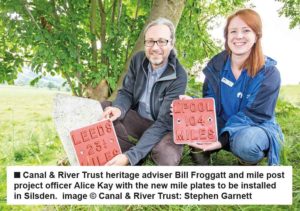
A large project to mark the anniversary has been the EveryMileCounts project. This has been a major fundraising appeal to restore or replace missing mileposts along the waterway’s 127- mile route. Backed by the Heritage Lottery Fund, the project has had a fantastic response from both volunteer groups from local communities who have helped to refurbish or replace the markers and also from sponsors who have made donations of up to £200 to fund a new marker. The Canal & River Trust are still keen to hear from volunteer groups or sponsors who would like to get involved.
Another celebration has also been to honour ‘Mr Leeds & Liverpool Canal’ Mike Clarke with a lock naming ceremony. Mike Clarke is the founder and president of the Leeds & Liverpool Canal Society and has contributed a tremendous amount to the canal over nearly 5 decades! Bank Newton Lock near Gargrave, North Yorkshire has been re-named the Mike Clarke Lock in tribute to him. He has published books and articles on the history of the canal and featured on TV too.
He said “I have visited canals over much of the world and have rarely found anywhere that compares with the awe inspiring view over the Dales offered by the Leeds & Liverpool Canal at Bank Newton in Yorkshire. To have a lock named after you is a great honour and I very much appreciate the gesture from the Canal & River Trust.”
The 15th October sees the launch of the Kennet Flotilla from River Lock, Granary Wharf. The Heritage Short Boat Kennet is a floating interactive museum owned by the Leeds & Liverpool Canal Society. To celebrate the bicentenary, the Kennet is re-enacting the maiden voyage of the completed Leeds-Liverpool which took place on the 15th October 1816. It will be accompanied by a flotilla of boats and will be greeted along the way by brass bands, Lord Mayors and other celebrations. The Kennet will be passing through many Yorkshire towns on its way to Liverpool on this re-enacted voyage so there is sure to be somewhere you can go see her pass by and join in the celebrations. If you miss the voyage, the Kennet usually has a permanent mooring at Greenberfield Top Lock in Lancashire.
For all details on the bicentenary events, you can visit;
www.canalrivertrust.org.uk
I must reference Mike Clarke’s work as an extremely valuable source of information for this feature. He has recently launched a new enlarged edition of his popular book ‘The Leeds & Liverpool Canal, a history’ which can be purchased from his website;
www.mikeclarke.myzen.co.uk and all good bookshops.
